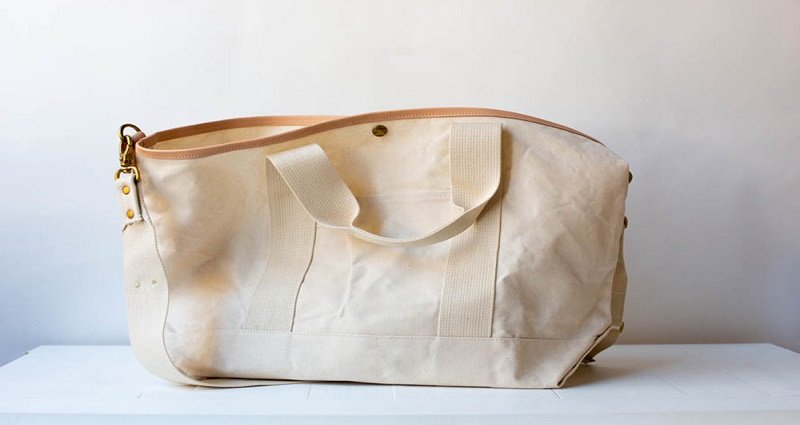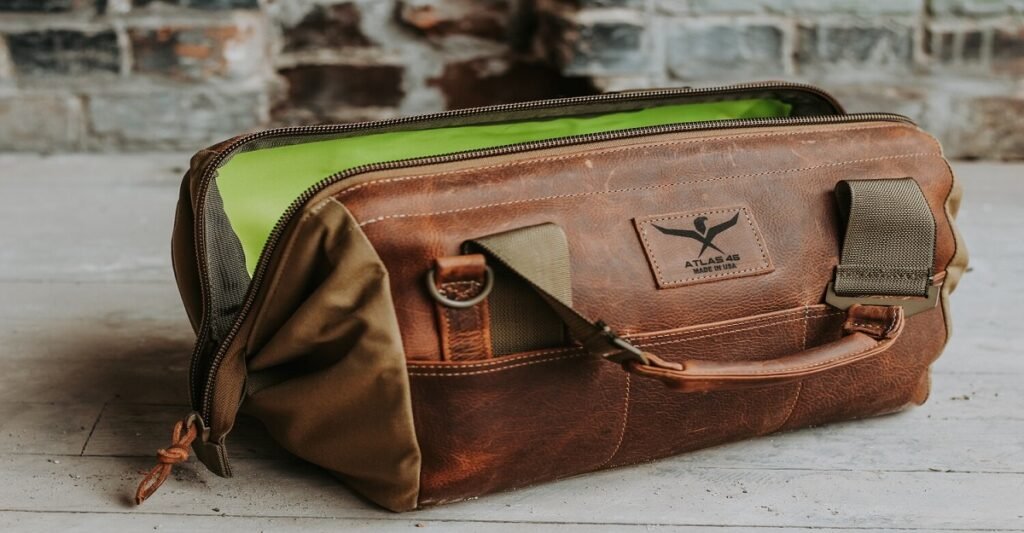It is very important to consider the materials used in tool bags as they are essential for professionals in each industry. They help keep tools organized and easily accessible, improving efficiency and productivity. Tool bags also promote safety by keeping hands free for tasks. They are versatile and durable, making them indispensable for any tradesperson.
What Materials Are Tool Bags Made Of?
In this article, we will learn about the best materials used in tool bags and why is it important to choose the right material for a tool bag.
Maximize Your Productivity With Best Materials Used In Tool Bags
Leather
Leather is one of the best materials used in tool bags. It has been a traditional material for tool bags since the 1930s, making it an essential tool for professionals in various industries such as carpentry and electrician work. Here are some key points to consider when discussing the use of leather in tool bags:
- Durability: Leather is known for its strength and durability, making it suitable for handling rough wear and tear.
- Classic Appearance: Leather tool bags have a classic appearance that is often associated with traditional craftsmanship and quality.
- Maintenance: Leather tool bags require regular maintenance to keep them in good condition. It includes cleaning and conditioning the leather to prevent it from drying out and cracking.
Nylon
Nylon is one of the ideal materials used in tool bags. It has become increasingly popular in the construction industry due to several key factors. Here are the important points to consider:
- Strength And Lightweight: Nylon is exceptionally strong and lightweight, making it an ideal choice for professionals who need to carry a variety of tools without being weighed down.
- Abrasion Resistance: Nylon is highly resistant to abrasion, ensuring the tool bag can withstand rough handling and harsh working conditions.
- Easy Cleaning: Nylon is easy to clean, making it suitable for use in various weather conditions and work environments.
Polyester
Polyester is the best fabric tool bag made of. It offers strength, resistance to stretching, good color retention, and low moisture absorption properties, making it a durable materials used in tool bags.
- Modern Use: Polyester is increasingly used in modern tool bags, offering a durable and versatile alternative to traditional materials like leather.
- Strength And Resistance To Stretching: Polyester exhibits high strength and resistance to stretching, ensuring that the tool bag can withstand the rigors of daily use without losing its shape or integrity.
- Color Retention: Polyester is known for its excellent color retention, maintaining the appearance of the tool bag over time and withstanding exposure to various work environments.
- Low Moisture Absorption: Polyester has low moisture absorption properties, making it suitable for use in different weather conditions and ensuring that the tool bag remains resilient in damp or humid environments.
Canvas
The historical use of canvas in tool bag manufacturing highlights its durability, resistance to tearing, affordability, and suitability for heavy-duty applications, making it a practical choice for professionals in the construction and handyman industries.
- Durability: Canvas is known for its durability, making it suitable for handling rough wear and tear.
- Resistance To Tearing: Canvas is highly resistant to tearing, ensuring that the tool bags can withstand the demands of heavy-duty applications.
- Affordability: Canvas is relatively inexpensive, making it an attractive choice for professionals who need a durable and affordable tool bag.
- Suitability For Heavy-Duty Applications: Canvas tool bags are well-suited for heavy-duty applications, such as construction and heavy machinery work.
Ballistic Nylon
The characteristics of ballistic nylon, including its exceptional strength, abrasion resistance, and toughness, make it the best choice for professionals in the construction industries
- Exceptional Strength: Ballistic nylon is known for its exceptional strength, making it a durable and reliable choice for tool bag design.
- Abrasion Resistance: This material offers high abrasion resistance, ensuring that the tool bag can withstand rough handling and harsh working conditions.
- Toughness: Ballistic nylon is valued for its toughness, making it suitable for use in high-stress environments where durability is essential.
Neoprene
The use of neoprene in specialized tool bags offers water resistance, flexibility, comfort, and suitability for specific applications, making it a practical choice in handyman industries.
- Water Resistance: Neoprene is known for its water resistance, making it suitable for use in specialized tool bags designed for specific applications, such as underwater work.
- Flexibility: Neoprene is a flexible material, allowing for a comfortable fit and easy movement.
- Comfort: Neoprene tool bags offer a high level of comfort, as they are designed to conform to the user’s body and distribute weight evenly.
Why Is It Important To Choose The Right Material For A Tool Bag?

Choosing the right material for a tool bag is crucial for its durability, comfort, functionality, and performance. By considering these factors, you can select a tool bag that meets your specific needs and enhances your productivity on the job.
- Durability: Choosing the right material for a tool bag ensures that it can withstand the demands of the job, such as rough handling, harsh weather conditions, and the weight of tools.
- Comfort: The material of the tool bag should be comfortable for the user, allowing for easy movement and reducing fatigue.
- Functionality: The material should be suitable for the specific requirements of the user, such as water resistance, flexibility, or abrasion resistance.
- Maintenance: Some materials, like leather, require regular maintenance to keep them in good condition, while others, like nylon, are easy to clean and maintain.
- Cost: The choice of material can also affect the cost of the tool bag, with some materials being more expensive than others.
- Environmental Impact: Consider the environmental impact of the material, as some materials may be more sustainable or eco-friendly than others.
Suggested Reads: How To Set Up A Tool Bag?
The Final Words
Choosing the right material for a tool bag is crucial for durability, comfort, and functionality. Leather, nylon, polyester, canvas, ballistic nylon, and neoprene are popular options. Consider the specific requirements of your job, such as the type of work and environment, and prioritize durability, comfort, and functionality when selecting a tool bag.
FAQs (Frequently Asked Questions)
What are the most common materials used in tool bags?
The most common materials used in tool bags are polyester, nylon, leather, canvas, ballistic nylon, and neoprene.
What are the advantages of using nylon in tool bag construction?
Nylon is lightweight, resistant to abrasion, easy to clean, and suitable for various weather conditions.
What is the traditional material used in tool bag manufacturing?
Leather is the traditional material used in tool bag manufacturing.
What should be considered when selecting a tool bag material?
Factors to consider when selecting a tool bag material include durability, comfort, functionality, maintenance, cost, and environmental impact.
What is the importance of choosing the right material for a tool bag?
Choosing the right material for a tool bag is important for its durability, comfort, functionality, and performance.

Adam is a tool geek who just loves making and breaking things. Doing the home improvements works and repairing things with his tools is his favorite past time. He loves to keep his tools arranged and sorted. On this blog, he shares his experience and knowledge.








